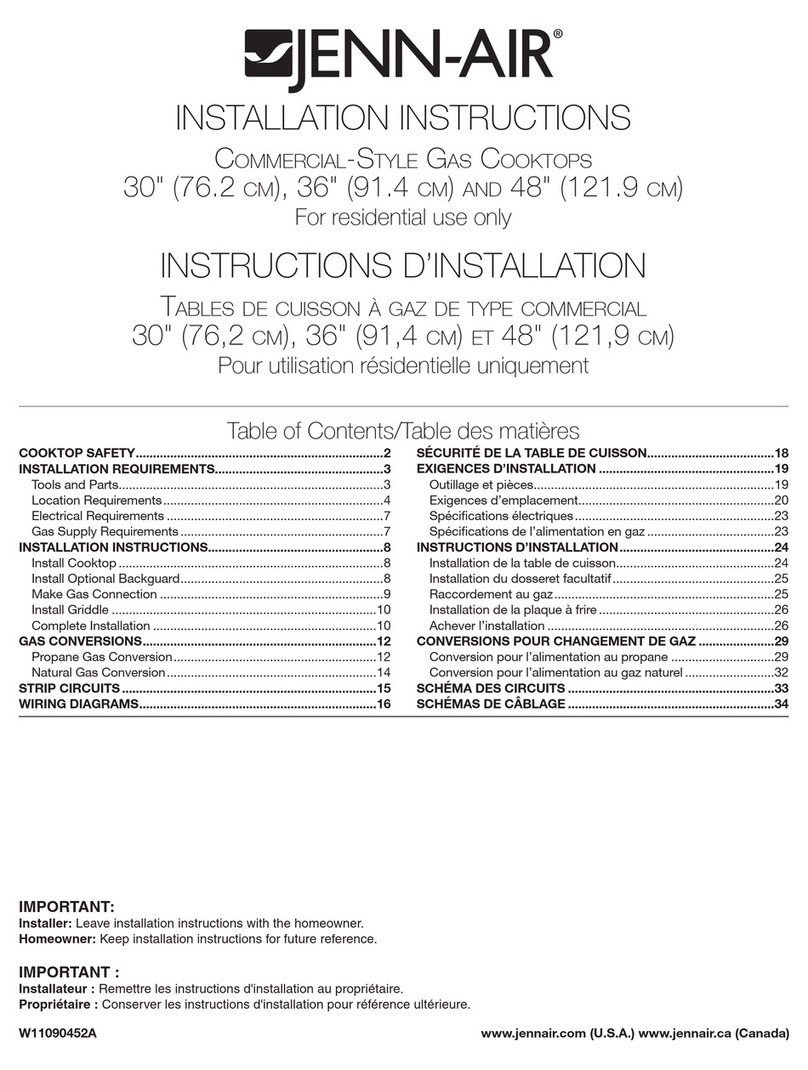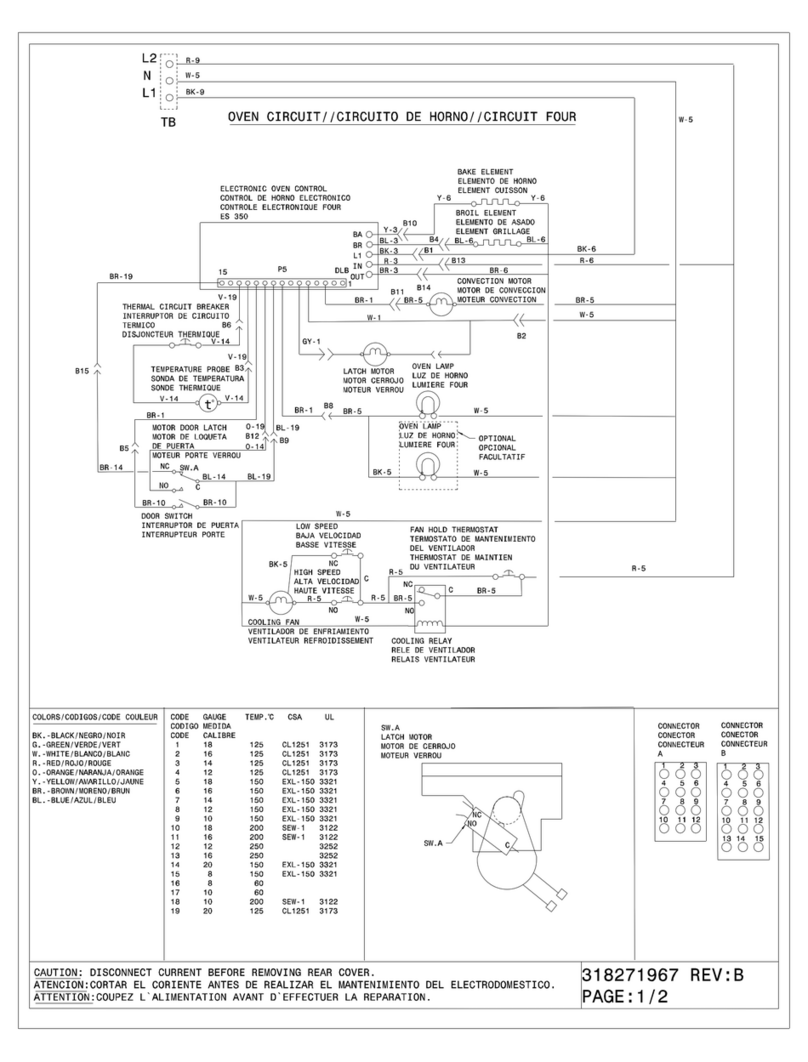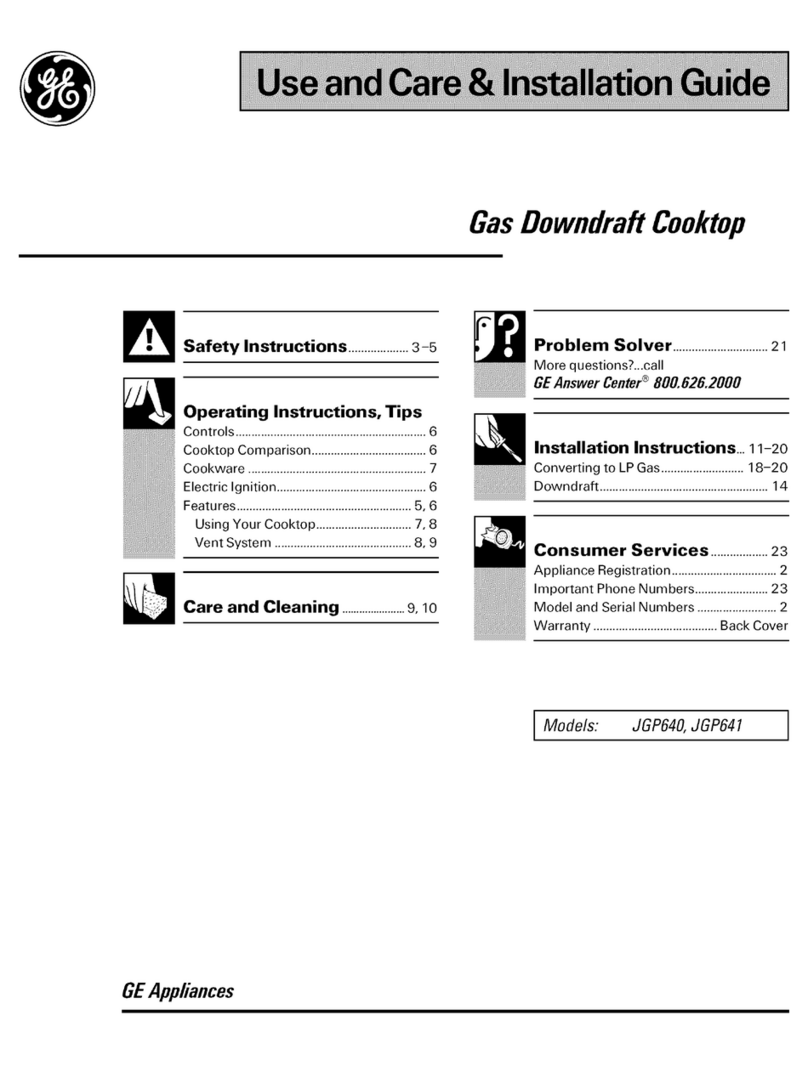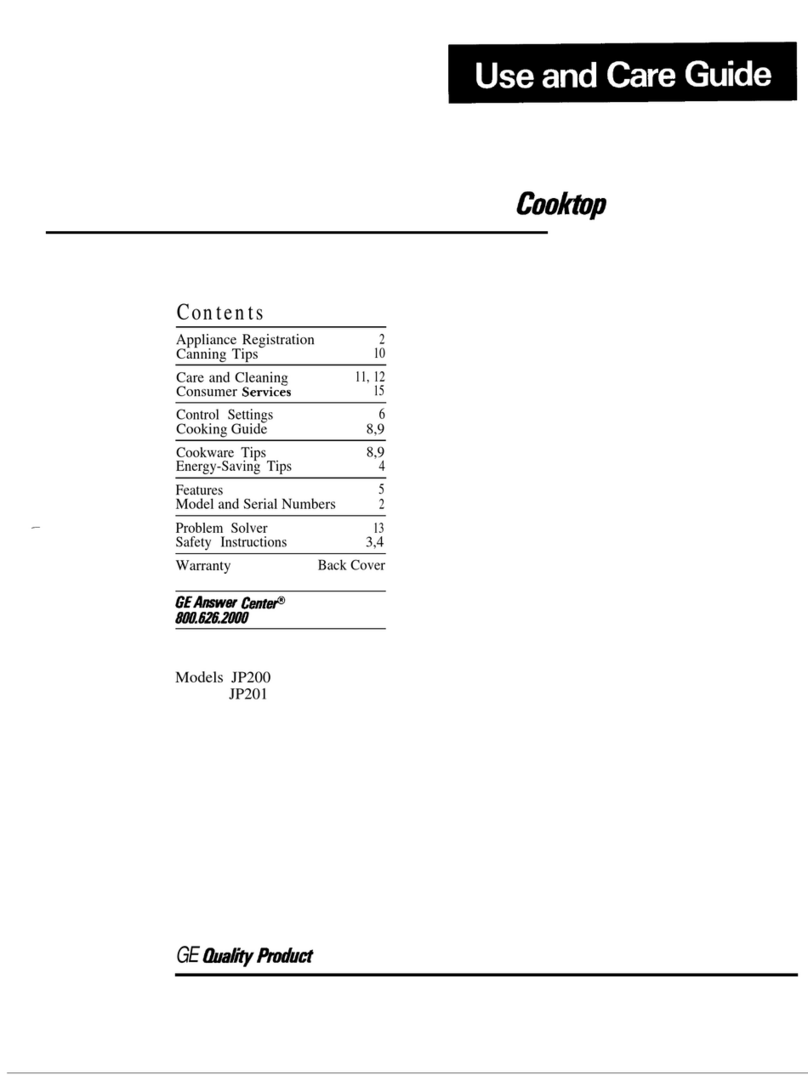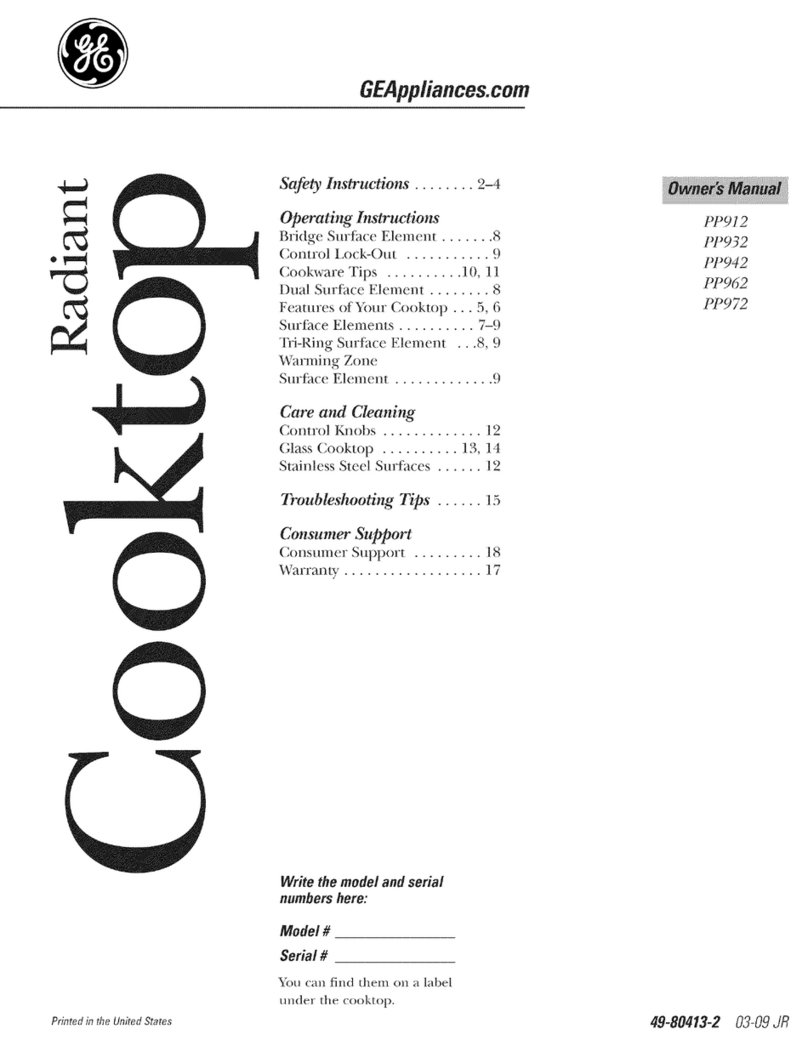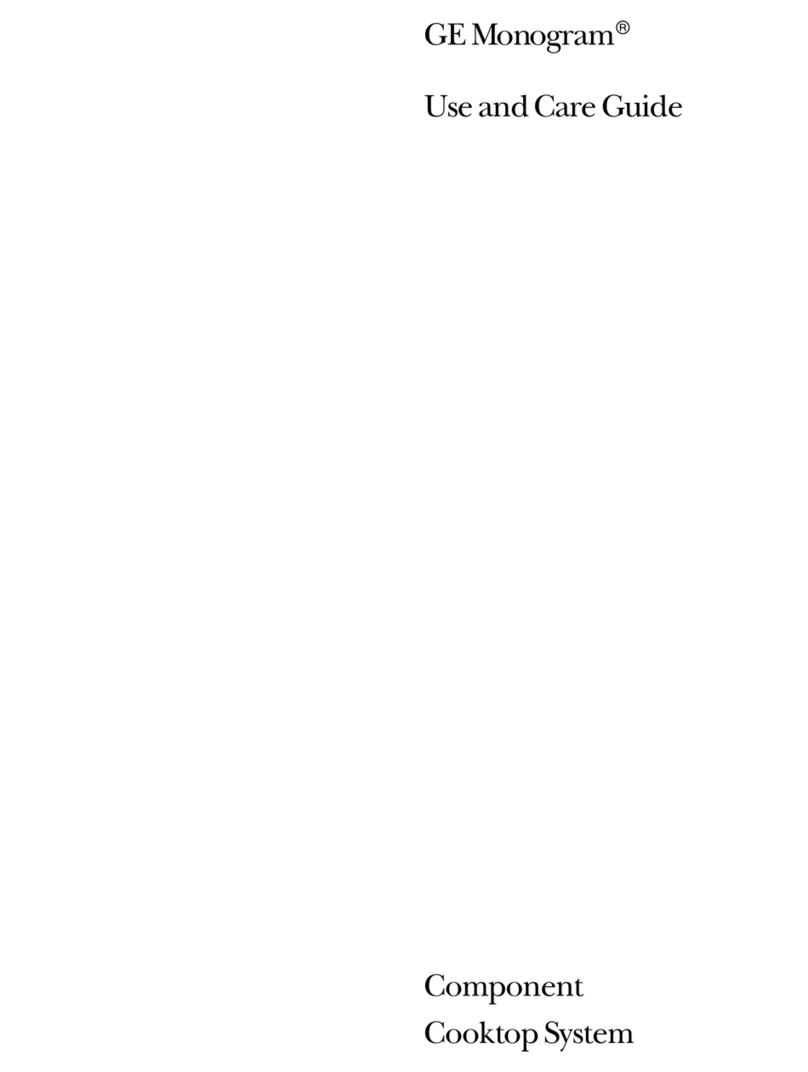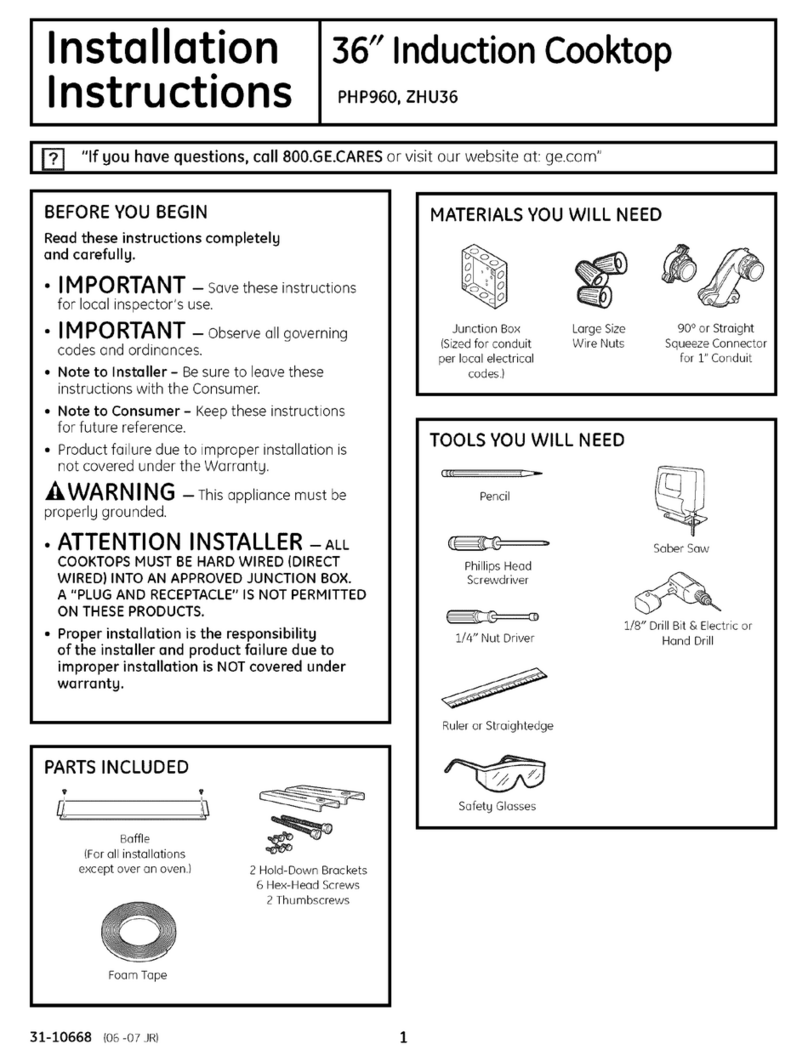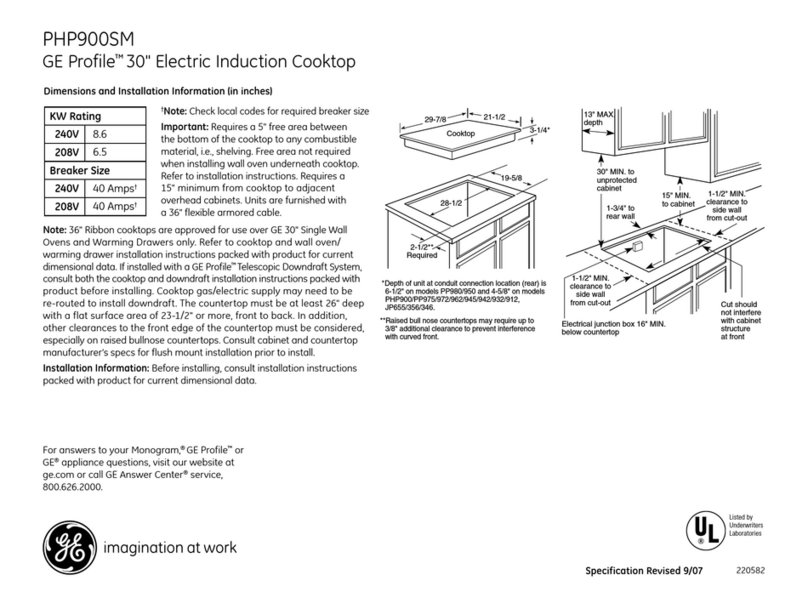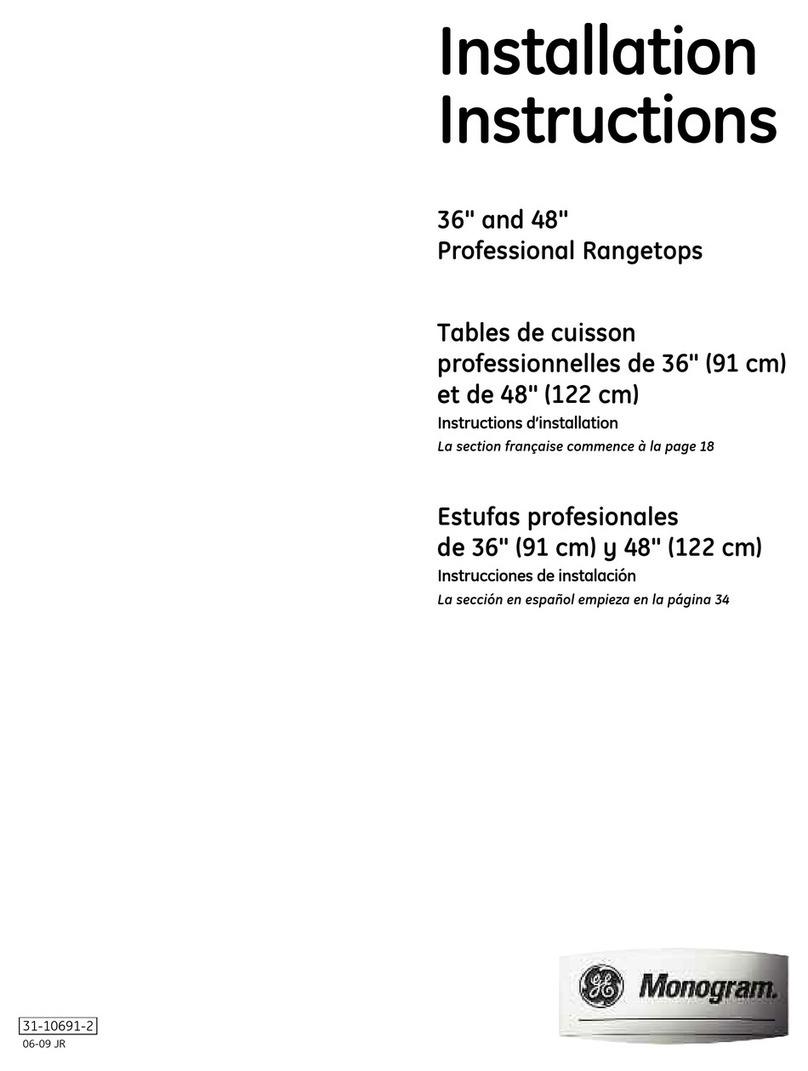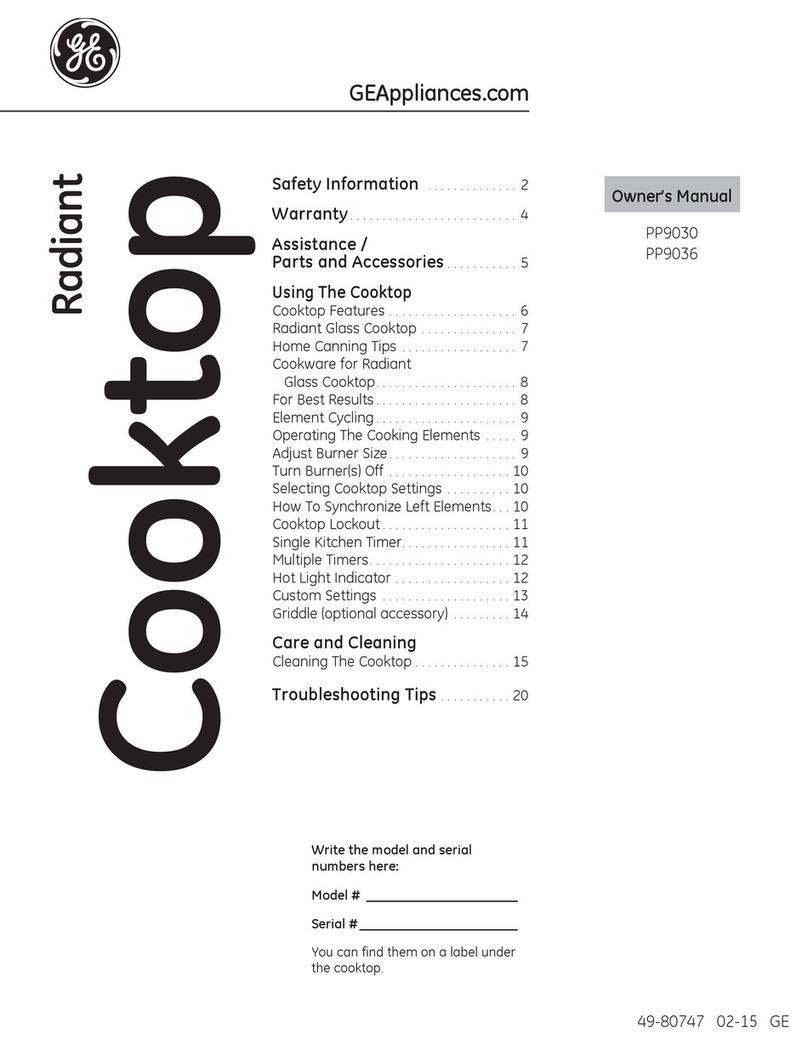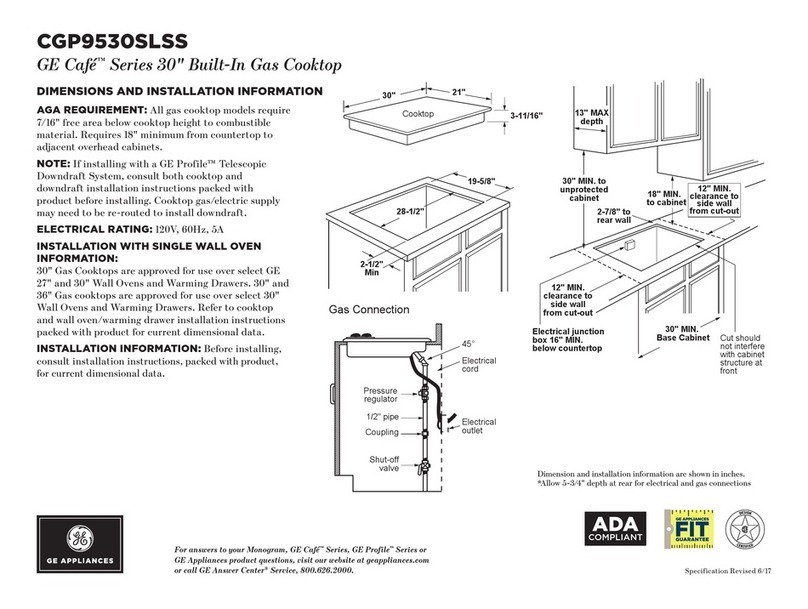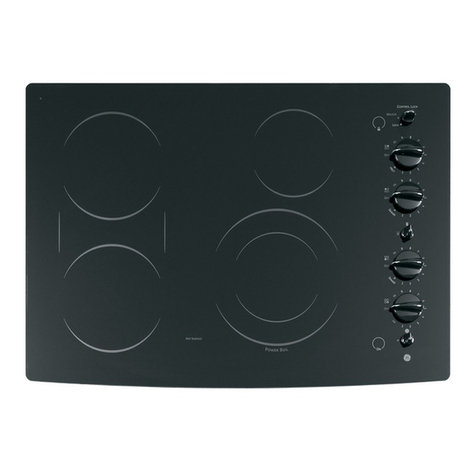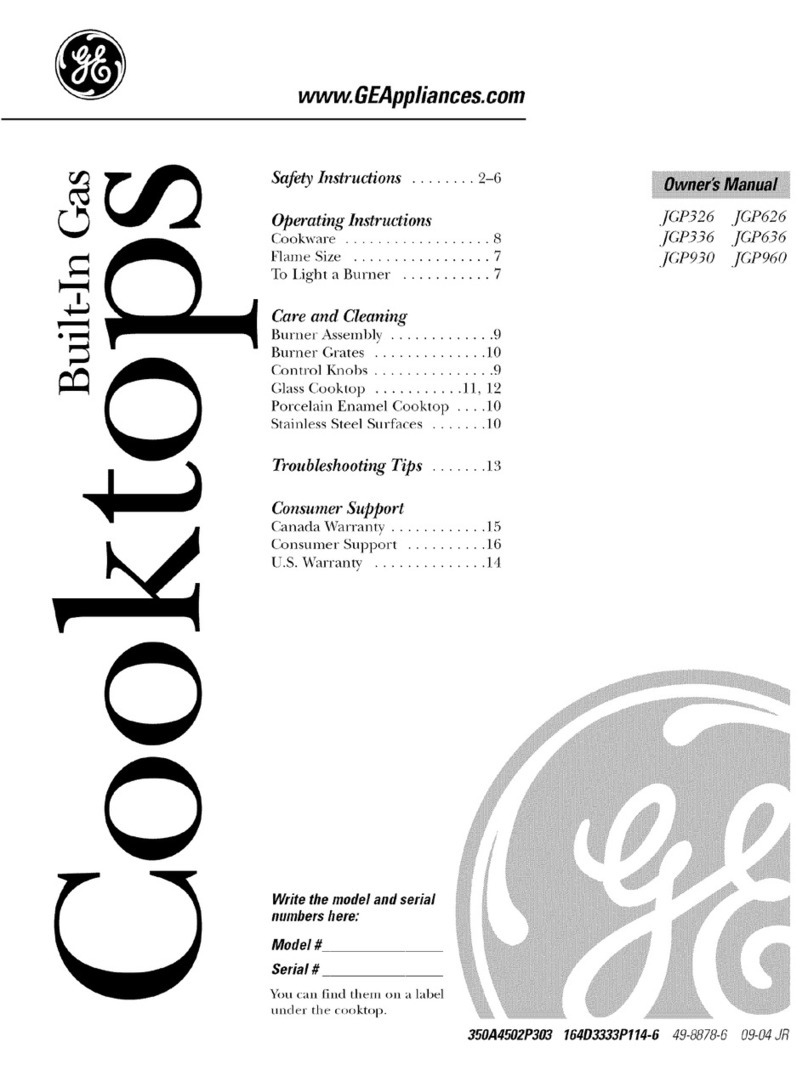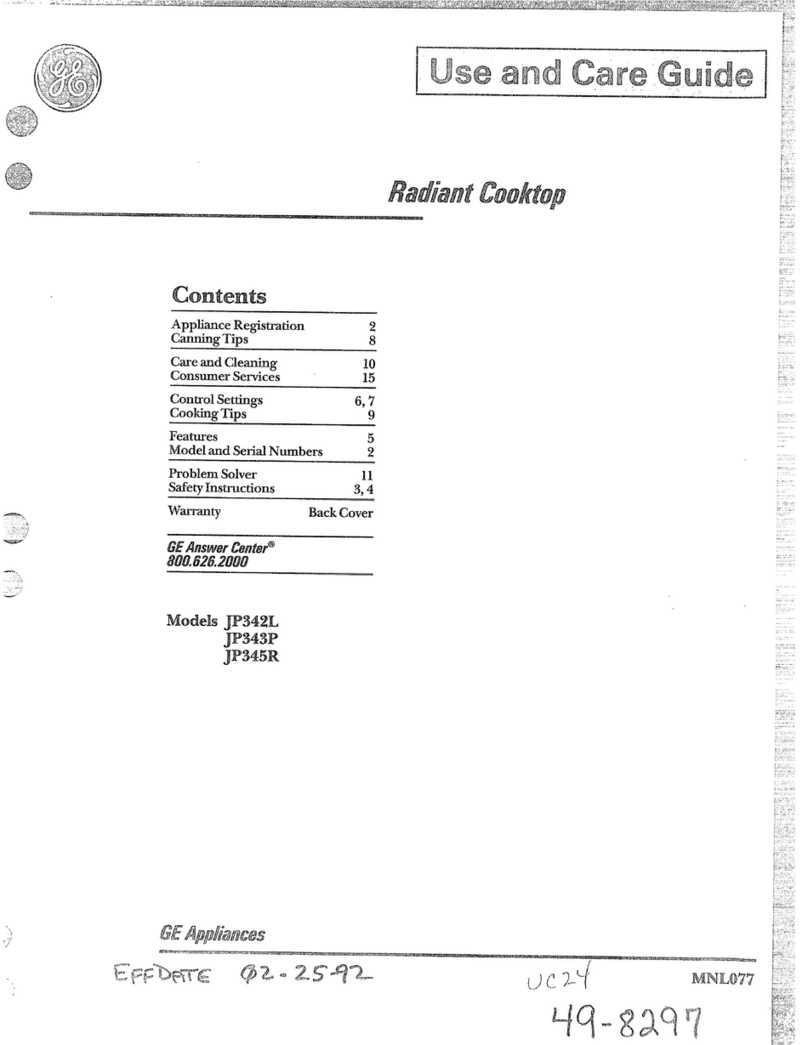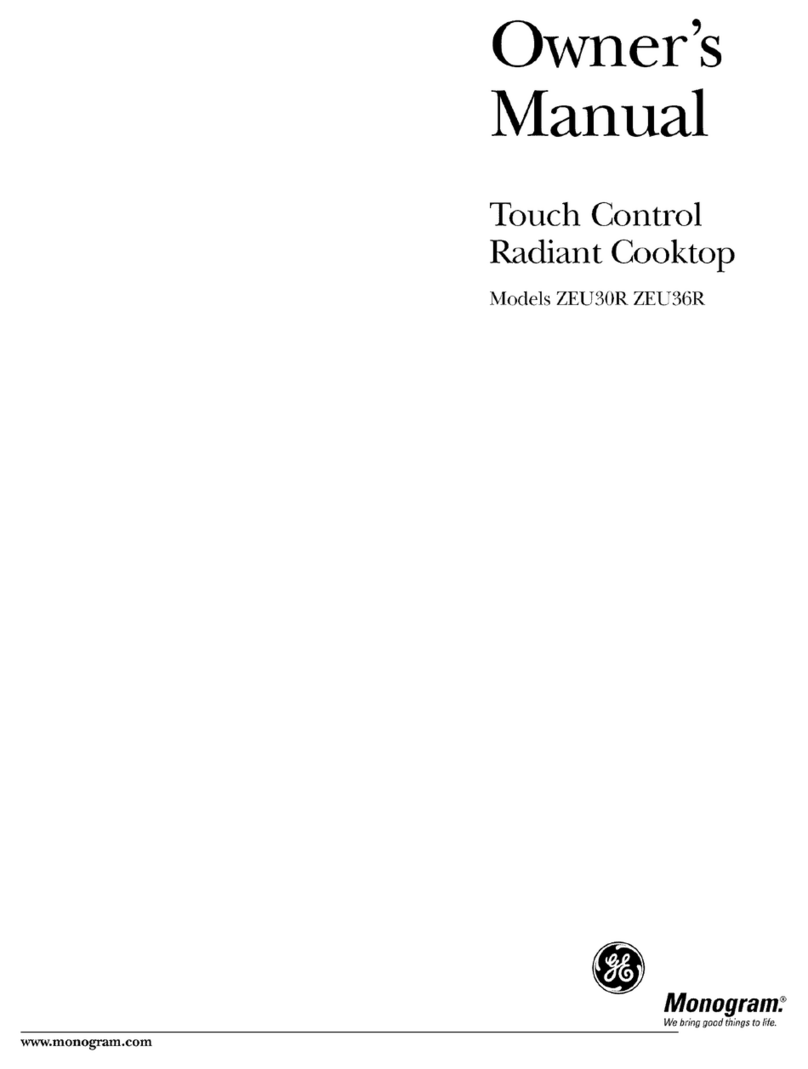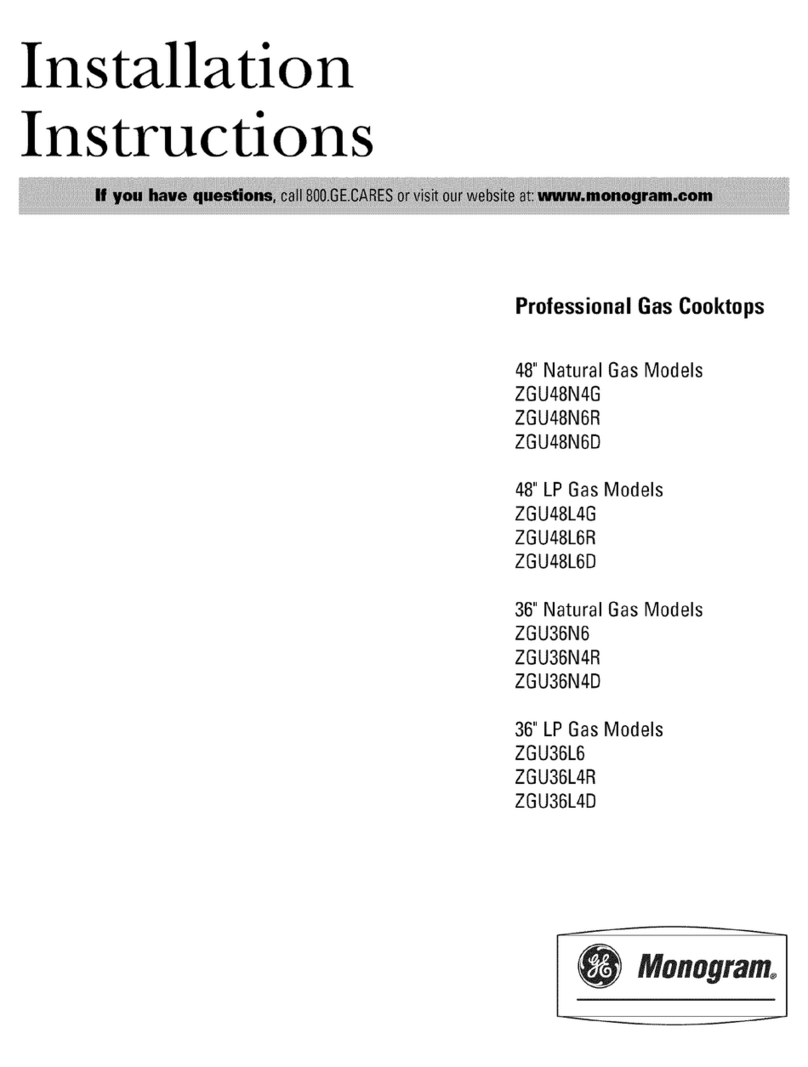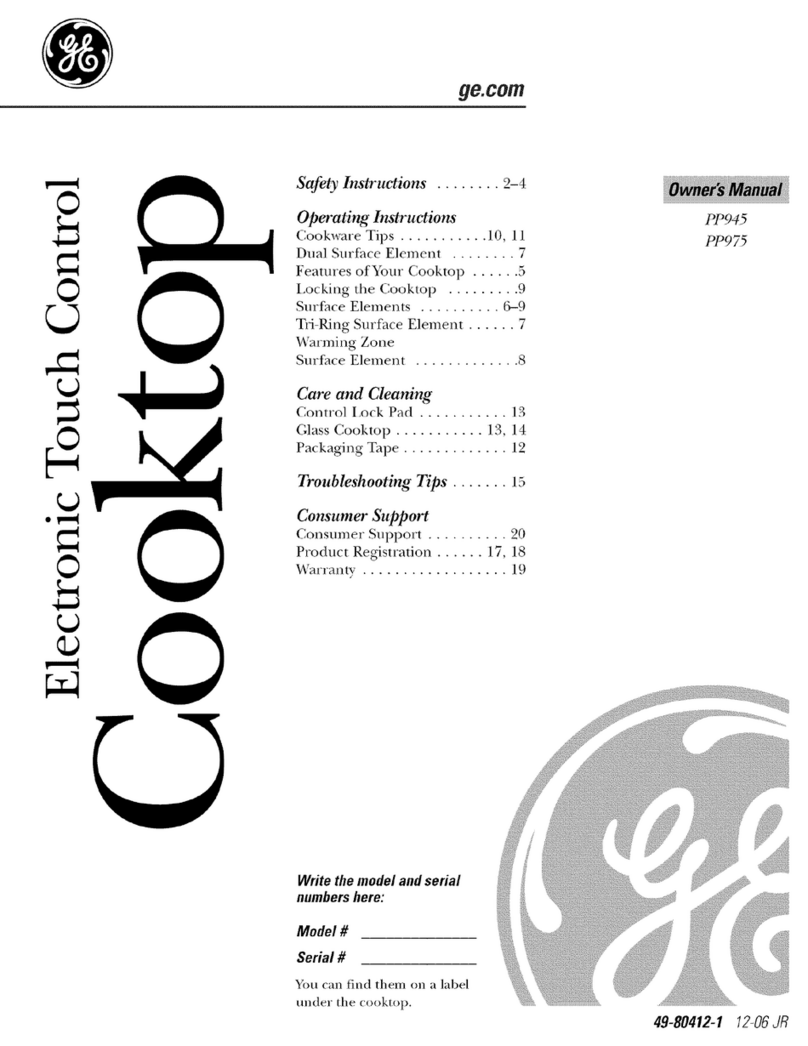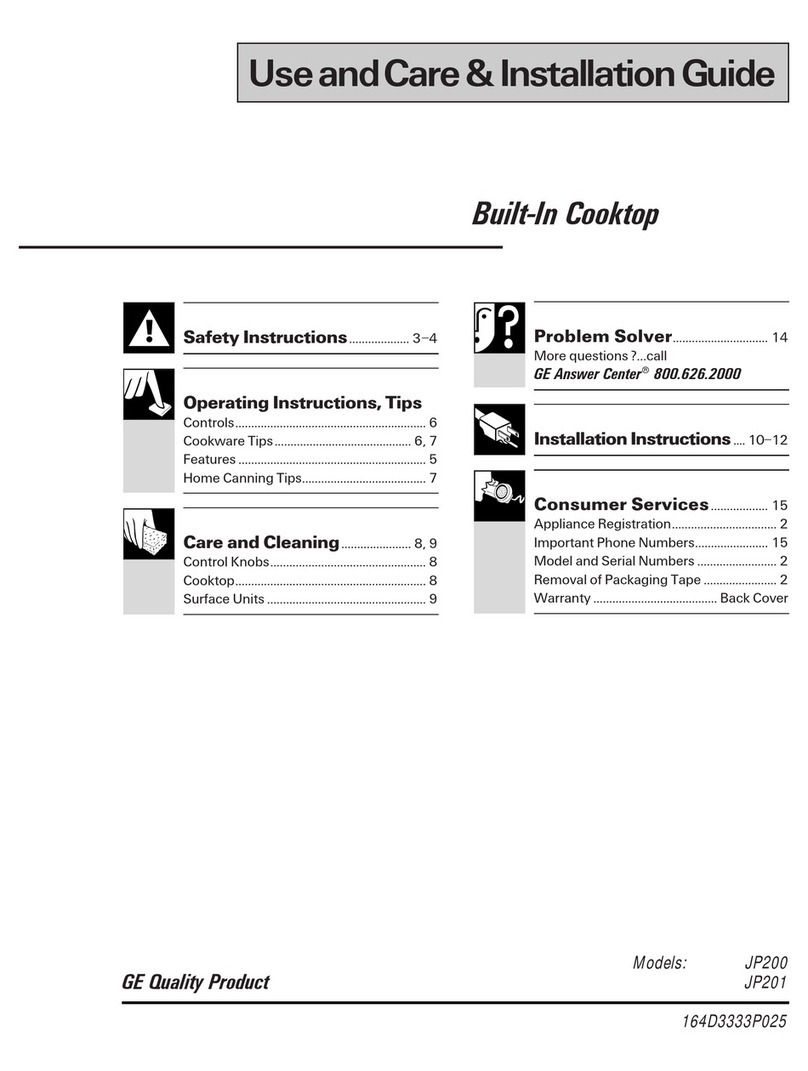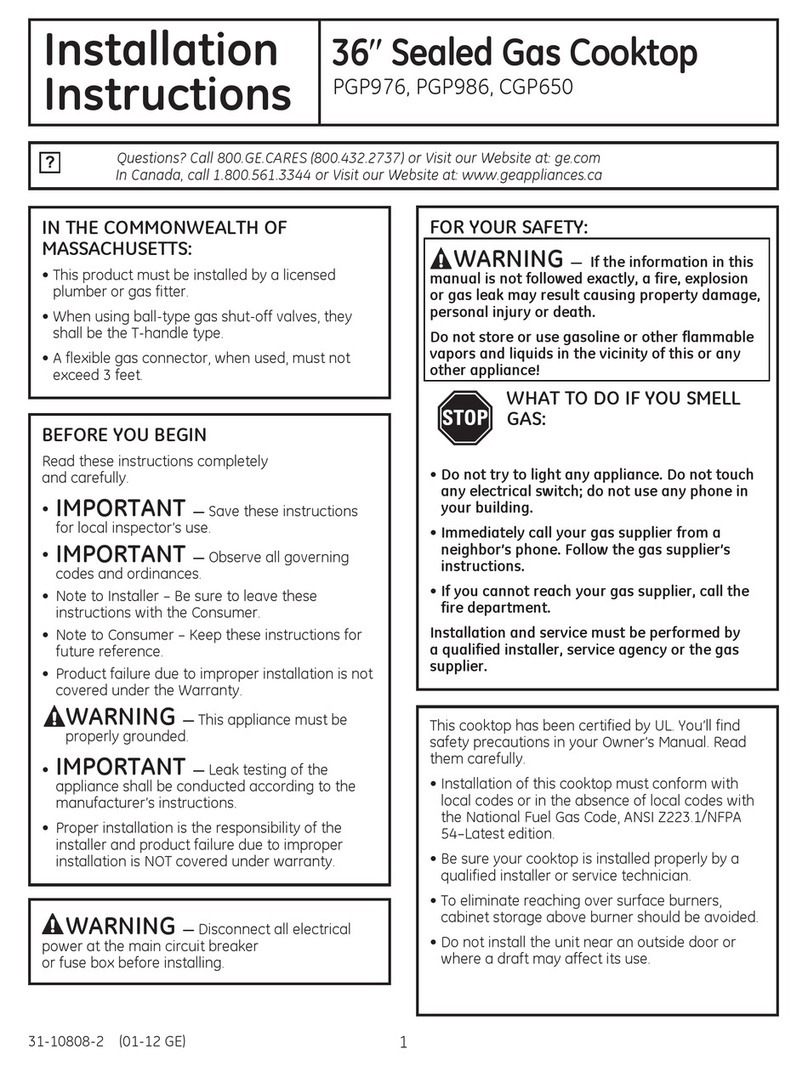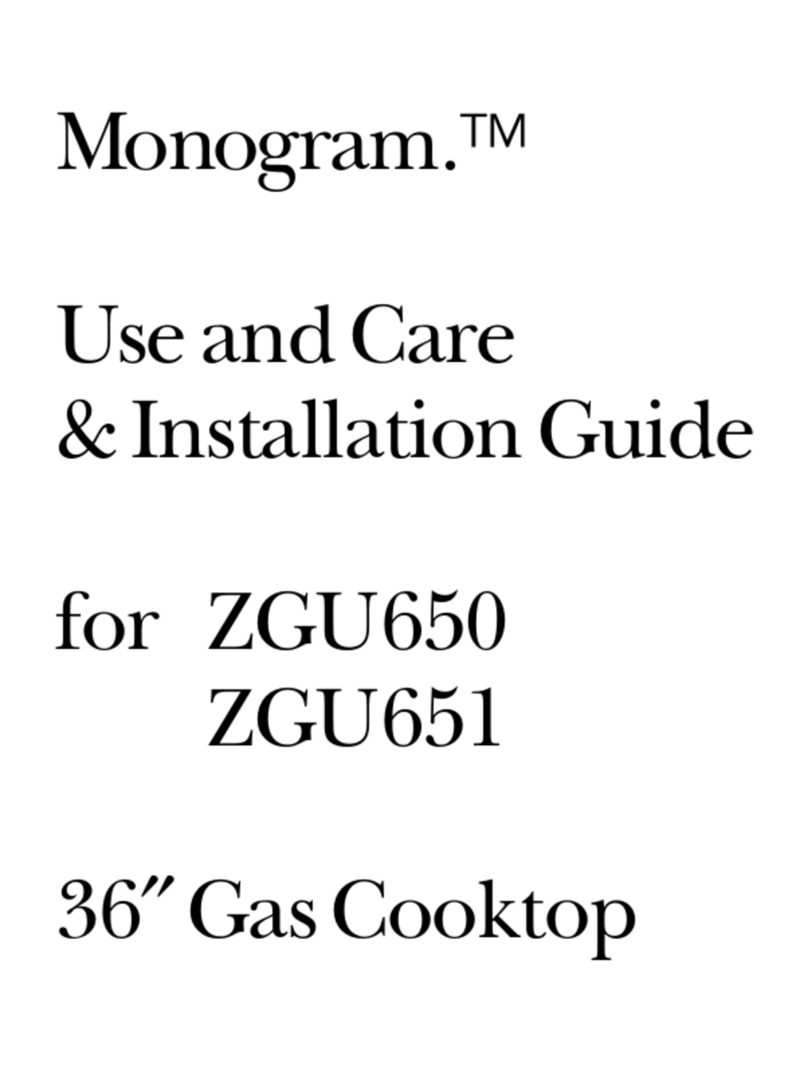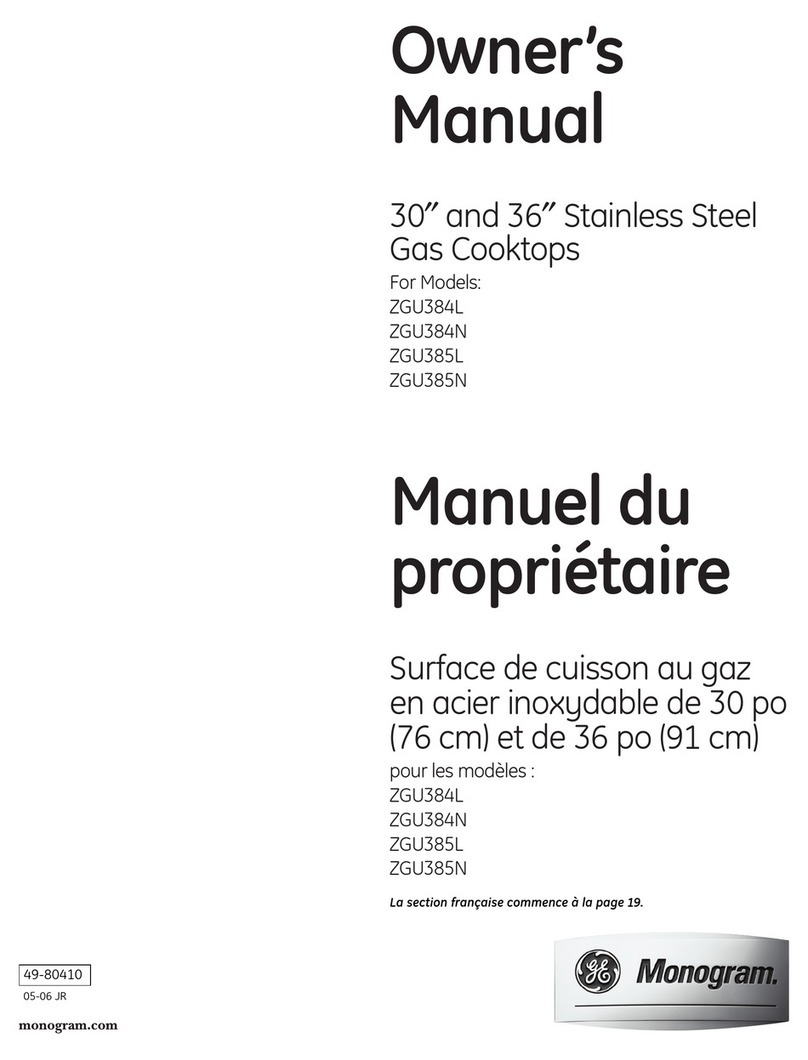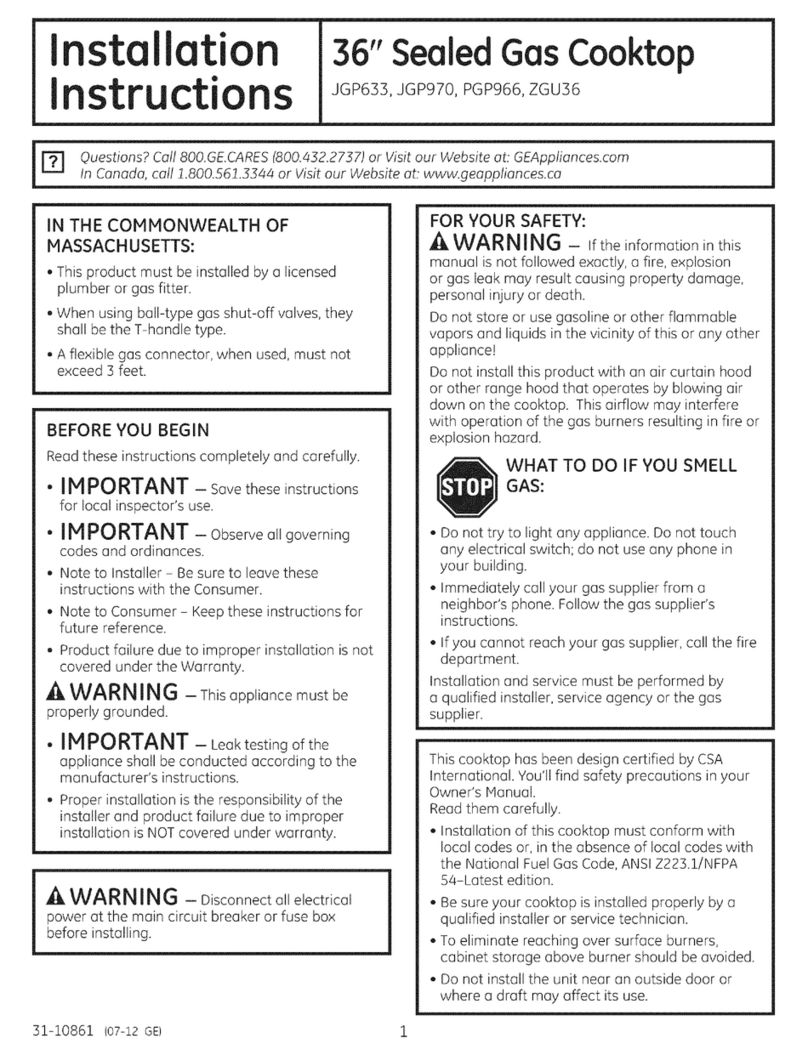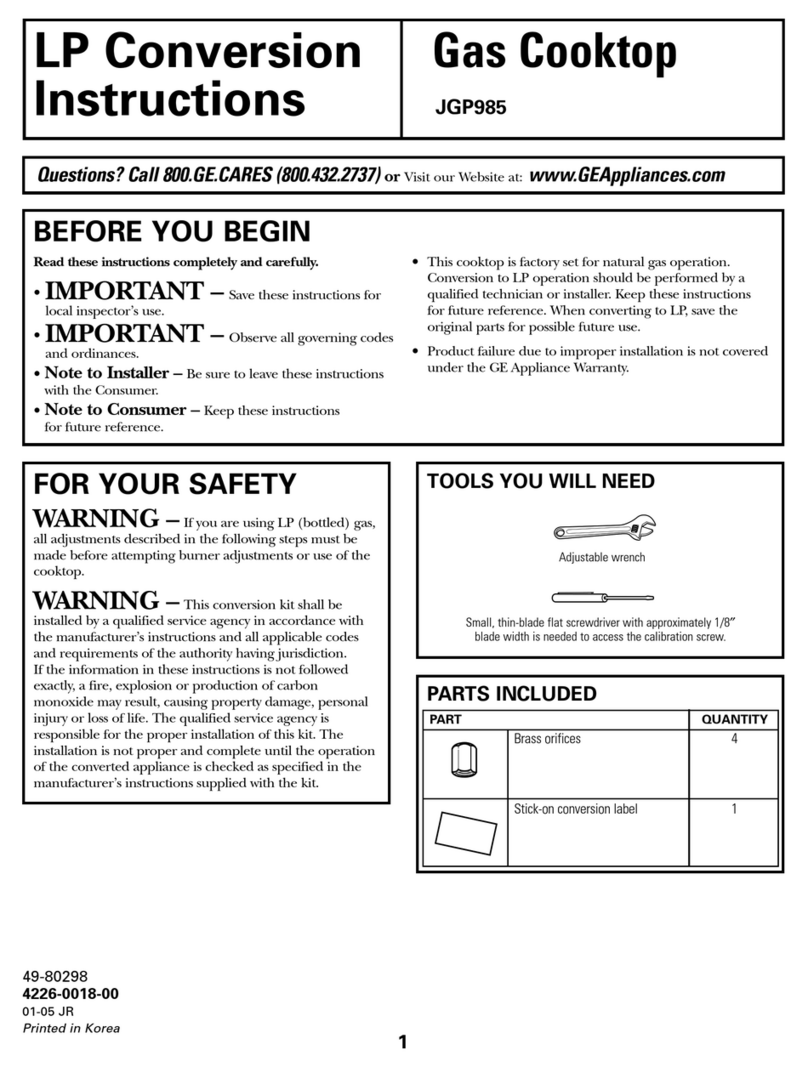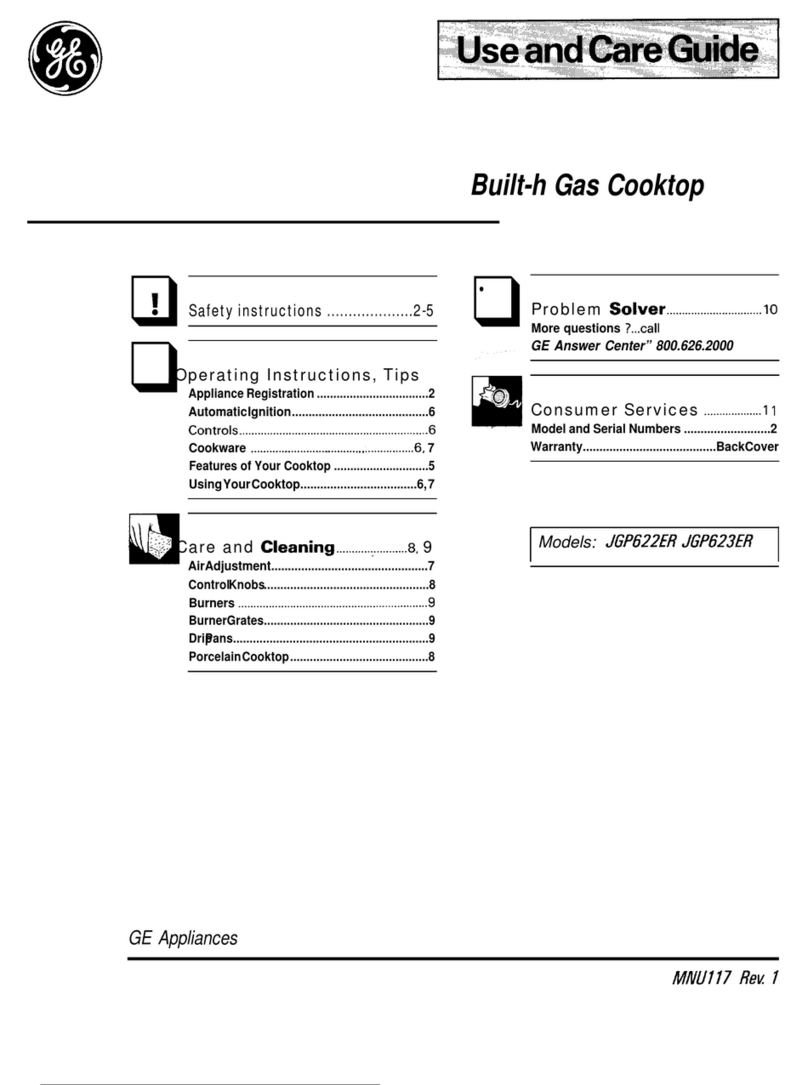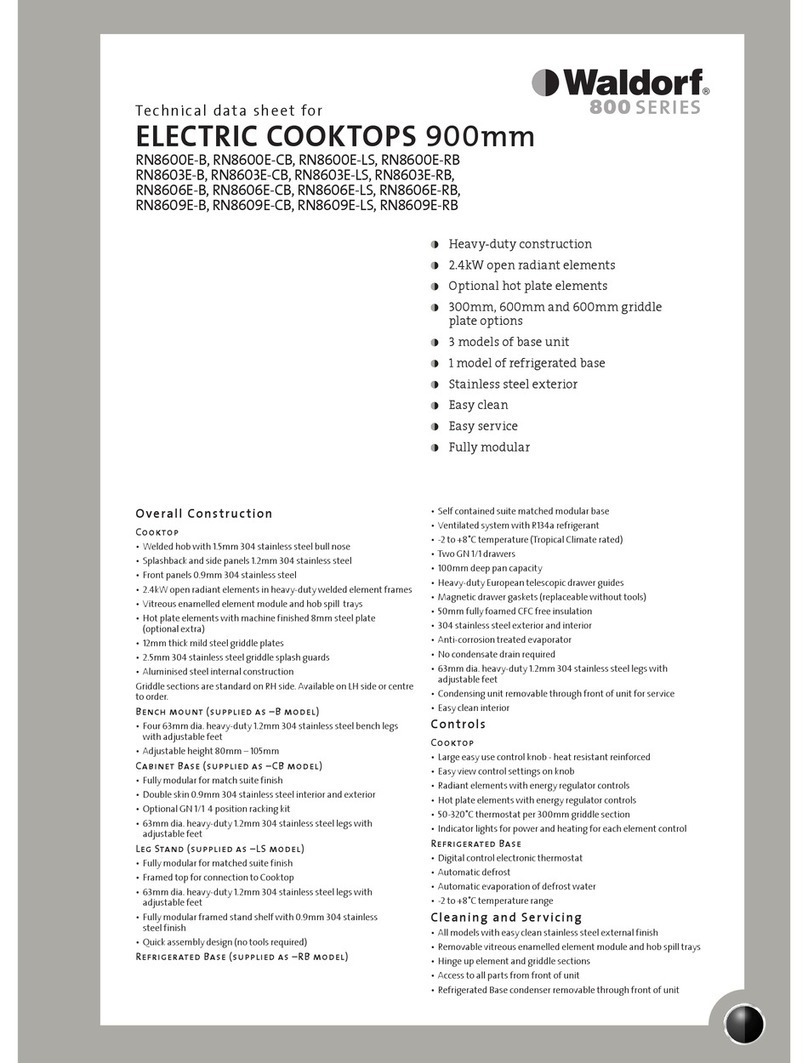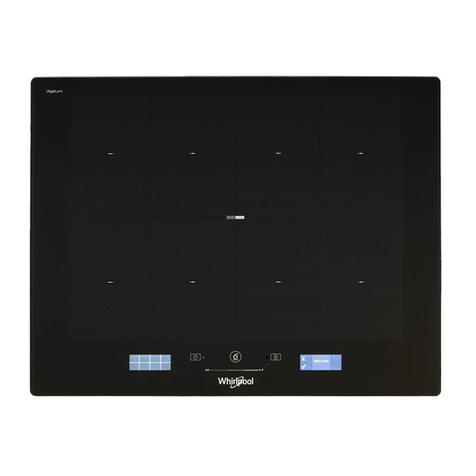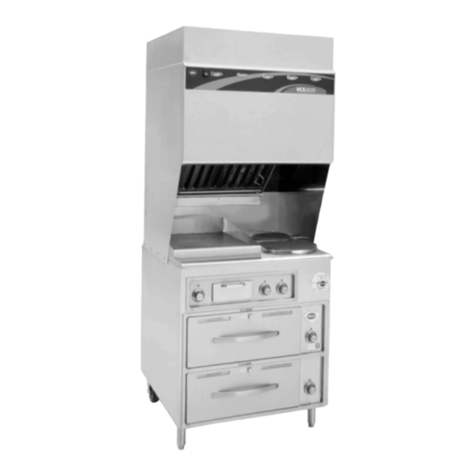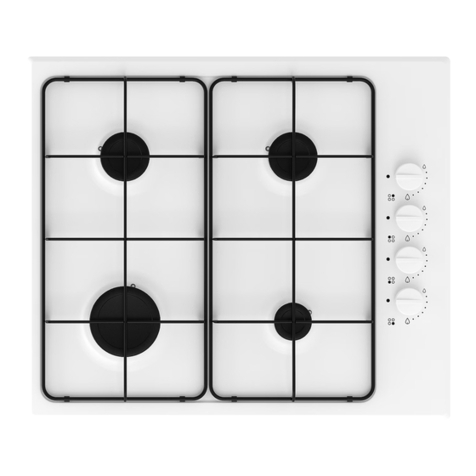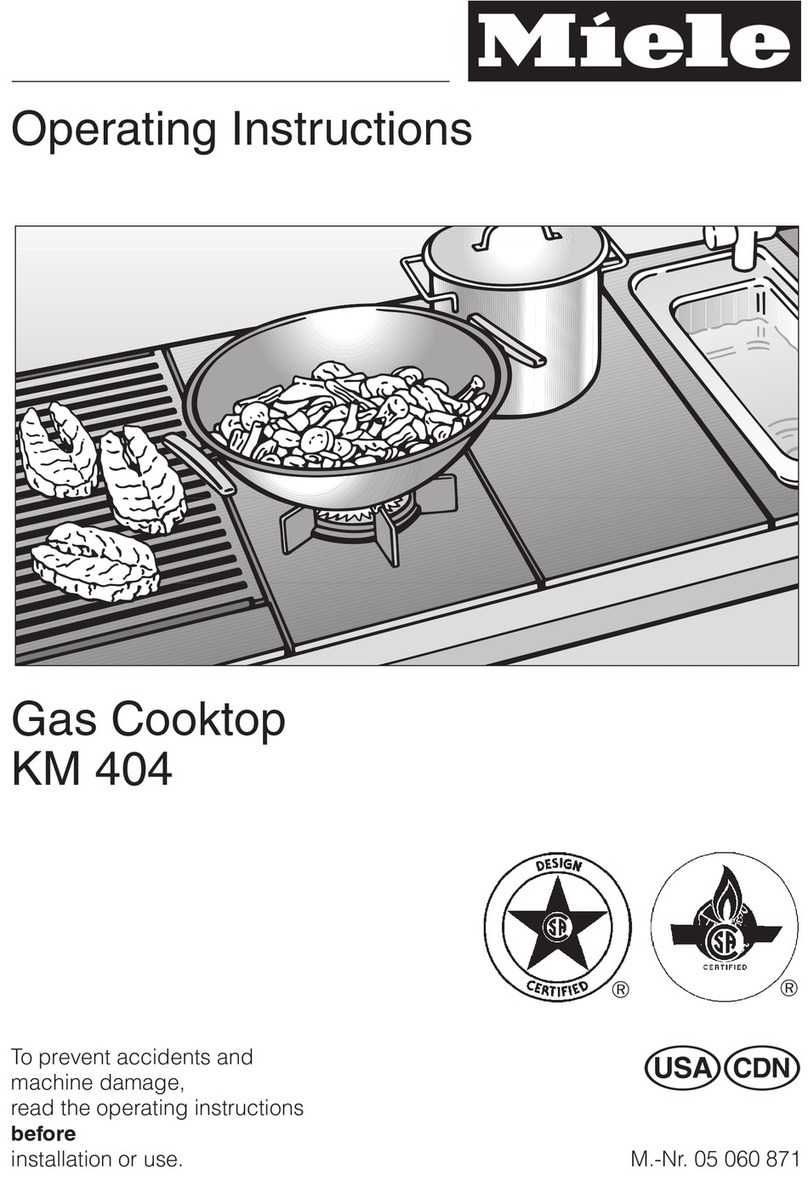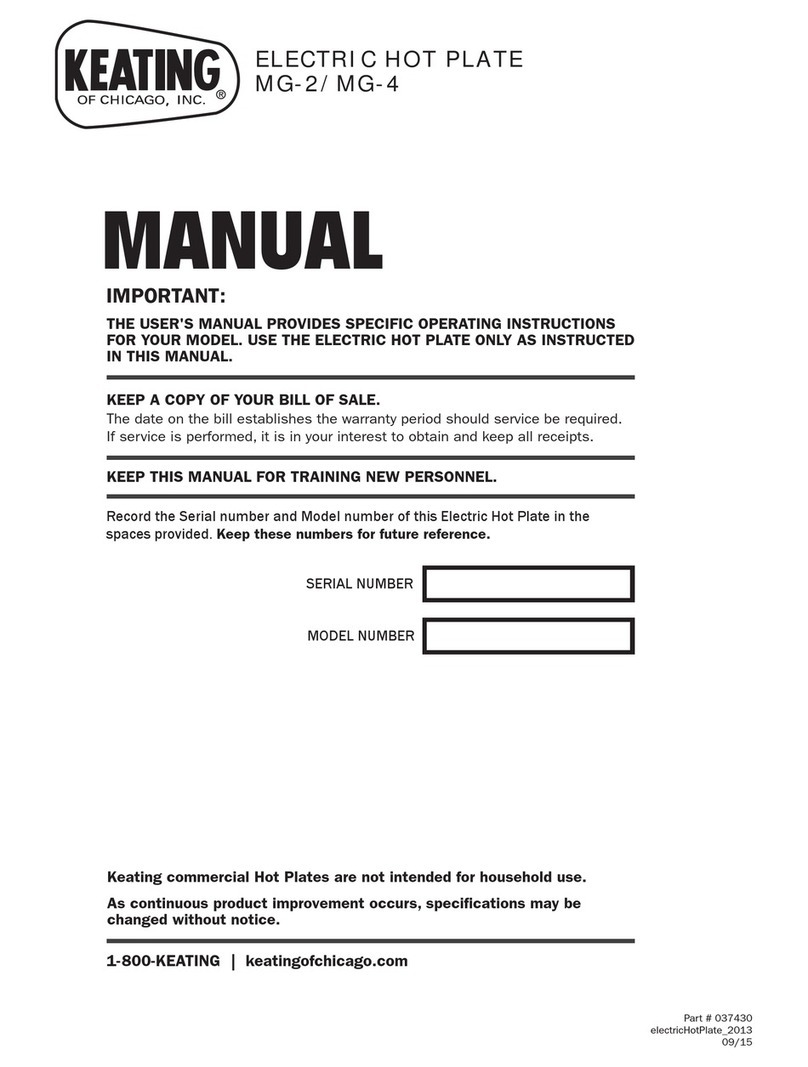●Do not s~re fl~mable matefials inan oven or
near the cooktop system components.
●Do not stem or me comb~tible materi~s,
gasoline or other flammable vapors and liquids
in the vicinity of this or any other gas or
electric appliance.
.Do not let COOking grease or other flammable
materials accumulate in or near the cooktop
system components.
.Never Ieavethe kitchen while using the grill
or griddk
QDo not replace the grease collector jar with a
mayonnaisejar which could break when hot
grease drips into it. Replace with any wide mouth
canningjar.
e
IcDo not use water on grease fires.
s
—Never pick up aflaming pan. Turn
the controls off. Smother aflaming
pan on asurface unit by covering the pan
completely with awell-fitting hd, cookie sheet or
flat tray. Use amulti-purpose dry chemical or
foam-type fne extinguisher.
Flaming grease outside apan can be put out by
covering it with baking soda or, if available, by
using amulti-purpose dry chemical or foam-type
fire extinguisher.
●Keep the grill drip pan and grease well clean
to reduce smoking andavoid grease fires.
●Tocontrol flame-ups, turn down the heat
setting to low, rather than off(0). Thiskeeps
the downdraft vent blower on. Or, turn the
VariableSpeed Vent blower to HI, then turn the
glill off (o).
Use along-handled utensil to carefully remove the
food from the grill.
These steps should control the flame until it
eventually goes out. If it does not, cover the entire
grill module with acookie sheet or the lid from a
large roasting pan. Use apotholder to remove this
later because it will be hot.
QDo not touch the surface units. Thesesurfaces
may be hot enough to bum even though they are
dark in color. During and after use, do not touch,
or let clothing or other flammable materials
contact the surface units, cooktop surfaces or
areas nearby the surface units. Allow sufficient
time for cooling of the cooking surfaces.
Potentially hot surfaces include the grill grates,
griddle and all components with electric cooking
elements or gas burners and grates.
.When cooking pork, follow the directions
exactly and always cook the meat to an internal
temperature of at least 170”F.This assures that,
in the remote possibility that trichina maybe
present in the meat, it will be killed and the meat
will be safe to eat.
Halogen/Radiant Surface Units
and Gas Burners
●Use proper pan siz*This cooktop system has
components equipped with electric surface units
or gas burners. Select cookware having flat
bottoms large enough to cover the selected surface
unit or burner. The use of undersized cookware
will expose portions of the surface units or
gas burners to direct contact and may result in
ignition of clothing. Proper relationship of
cookware to the surface unit or the burner will
also improve efficiency.
●Only certain types of giass?glass/cerami~
earthenware or other glazed containers are
suitable for cooktop service; others may break
because of the sudden change in temperature.
sNever leave the surface units or gas burners
unattended at high heat settings. Boilovers
cause smoking and greasy spillovers that may
catch fire.
●Tominimize the possibility of bums, ignition
of flammable materials and spillage, the handles
of cookware should be turned without extending
over nearby surface units or burners.
.Always ~rn the electric surface unitOr g=
burner controls off (0) before removing the
cookware.
gWatch foods being ffied at high or medium-
high heat settings.
cWhen flaming foods are under the exhaust
hood, turn the hood fan off. The hood fan,
if operating, may spread the flame.
cFoods for frying should be as dry as possible.
Frost on frozen foods or moisture on fresh foods
can cause hot fat to bubble up and over the sides
of the pan.
(continued nextpage)
5

